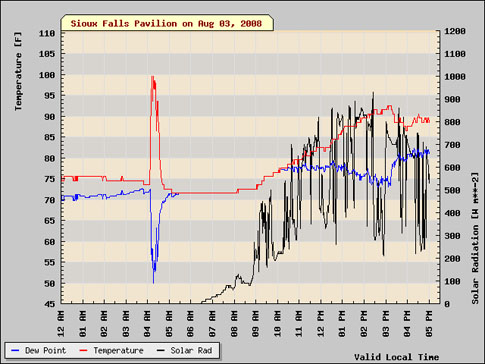I glanced at the Argus Leader in the break room at work yesterday, and the letter to the editor on the front page of the Voices page jumped out at me; it literally warmed my heart!
Snow accumulating along curbs
DEB K. OLSON • SIOUX FALLS • JANUARY 20, 2011
Could someone define curb-to-curb snow removal?
The snow in our neighborhood is 5 feet or more from the curb and not because cars were on the streets when they were plowed as we are diligent about moving them before the plows arrived.
Get it wrong the first time, and the snow gets farther from the curb with each new snowfall that requires plowing.
If I put the extra snow back in the street, all along my property line, could I call the street department and request someone to come get the leftover snow, or will the city put it back in my driveway because it had a do-over?
Or, could I call a private plow operator and send the bill to the city?
Mail is not being delivered to our curbside mailboxes because the mail trucks can’t get close enough. Why should homeowners be required to move the snow that shouldn’t have been left there in the first place? Maybe Mayor Mike Huether could pick up our mail at the post office and deliver it to us on his way to Whisk & Chop to discuss the events center.
When the city plowed the emergency snow route at the end of our block, twice, it left the extra snow at the end of the street. That made it pretty tough to get through, and the snow turns to concrete as we have to drive on it until we are blessed with a snowplow.
Does anyone at City Hall really listen when concerns are called in? What are we paying taxes for?
The work is half-baked at best.
I’ve been singing that tune ever since I became a homeowner and have had to park a vehicle on the street. At our house — with it’s narrow, short driveway and an attached single-car garage that rarely has room to fit a single car — four of the five vehicles we have are relegated to park on the street. Several of our neighbors also park on the street, so when the street narrows because of snow accumulation, we really notice it.
When the snowplows come by our house they typically have the edge of the blade a good foot or so from the curb. When they are pushing a good amount of snow, a lot of the snow falls back behind where the edge was, so the snow ends up even further from the curb. And when they’re not being especially careful about where they have the blade they can start out a good two feet from the curb, and then the lost space really starts to add up.
At our house we’ve resorted to going out after the snowplows have been by and digging the snow by hand right up to the curb. We pile the snow between the street and sidewalk, but that has its limits; right now the peak of the snow pile is a good five feet tall, and throwing more on it just lands it on the sidewalk. The photos above are from a year ago, but it looks the same this year; you can hardly see the roof of my 735 from the front window of the house, and the Hondas just disappear behind the pile. It’s a little ridiculous. It also makes clearing frost & snow from the windows interesting because there’s so little room between the car and vertical snowbank. And forget about opening the passenger-side door; just ain’t happening.
On the side streets the distance between the snow pile and the curb is one thing, but there are a couple of places near home — on 22nd and 26th Streets, near the VA Hospital and Children’s Care Center &mash; where the same street-narrowing thing happens, and many employees continue to choose to park their cars there anyway. With heavy traffic flowing in both directions through those areas, it gets a little dicey driving past those spots.
I can understand that the plow drivers need to keep their distance from the curb a bit to avoid damaging the curbs and their equipment, but it’s pretty annoying for them to keep moving further and further from the curb each time. Even though we go the extra step in clearing the snow right up to the curb for them, they still maintain their distance when passing our house, but even if they did push the snow up against the curb in front of our house, the snow would have nowhere to go anyway, so…
It’s there that I run out of steam on my rant. Beaten again by overthinking the issue.



